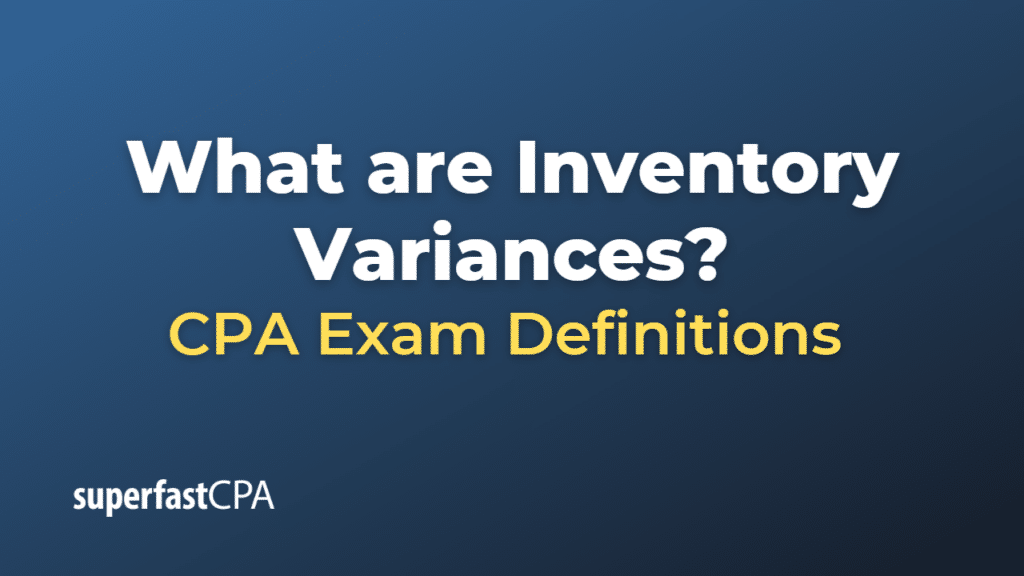Inventory Variances
Inventory variances refer to the differences between the actual inventory quantities or costs and the expected or standard quantities or costs.
Inventory variances can occur due to several reasons:
- Quantity Variances: These occur when the actual quantity of inventory is different from what is recorded in the inventory records. Reasons for quantity variances can include theft, loss, damage, miscounts, errors in recording transactions, or issues with goods receipt or shipping.
- Cost Variances: These occur when the actual cost of inventory is different from the expected or standard cost. Reasons for cost variances can include changes in supplier prices, freight costs, import duties, handling costs, and errors in recording transactions.
Inventory variances can be significant because they can impact a company’s financial statements and operational performance. They can also indicate potential issues that need to be addressed, such as problems with inventory management, supplier relationships, internal controls, or theft prevention.
To detect and manage inventory variances, companies often use a combination of physical inventory counts, cycle counts, perpetual inventory systems, standard costing systems, and variance analysis. If significant variances are found, it’s important to investigate the causes, correct any errors, and implement measures to prevent similar issues in the future.
Example of Inventory Variances
Suppose a retail clothing store maintains an inventory of a certain style of jeans. The records show that there should be 500 pairs in stock, valued at a cost of $25 each, or $12,500 total.
At the end of the quarter, the store conducts a physical inventory count and discovers that there are actually only 480 pairs of jeans in stock. This discrepancy in quantity is a quantity variance. The store is missing 20 pairs of jeans, possibly due to theft, damage, or errors in recording transactions.
Next, the store realizes that due to changes in supplier prices and import duties, the cost of each pair of jeans has actually increased to $26. Therefore, the value of the 480 pairs in stock is actually 480 * $26 = $12,480, not 480 * $25 = $12,000 as they had been recording. This discrepancy in cost is a cost variance.
So in this example, the store has both a quantity variance of 20 pairs of jeans and a cost variance of $1 per pair of jeans. These variances might prompt the store to investigate the causes, correct the errors in their inventory records, and perhaps also implement measures to improve their inventory management and internal controls. For example, they might need to improve their security measures to prevent theft, or negotiate with their suppliers to manage cost increases, or update their inventory recording procedures to ensure accuracy.













